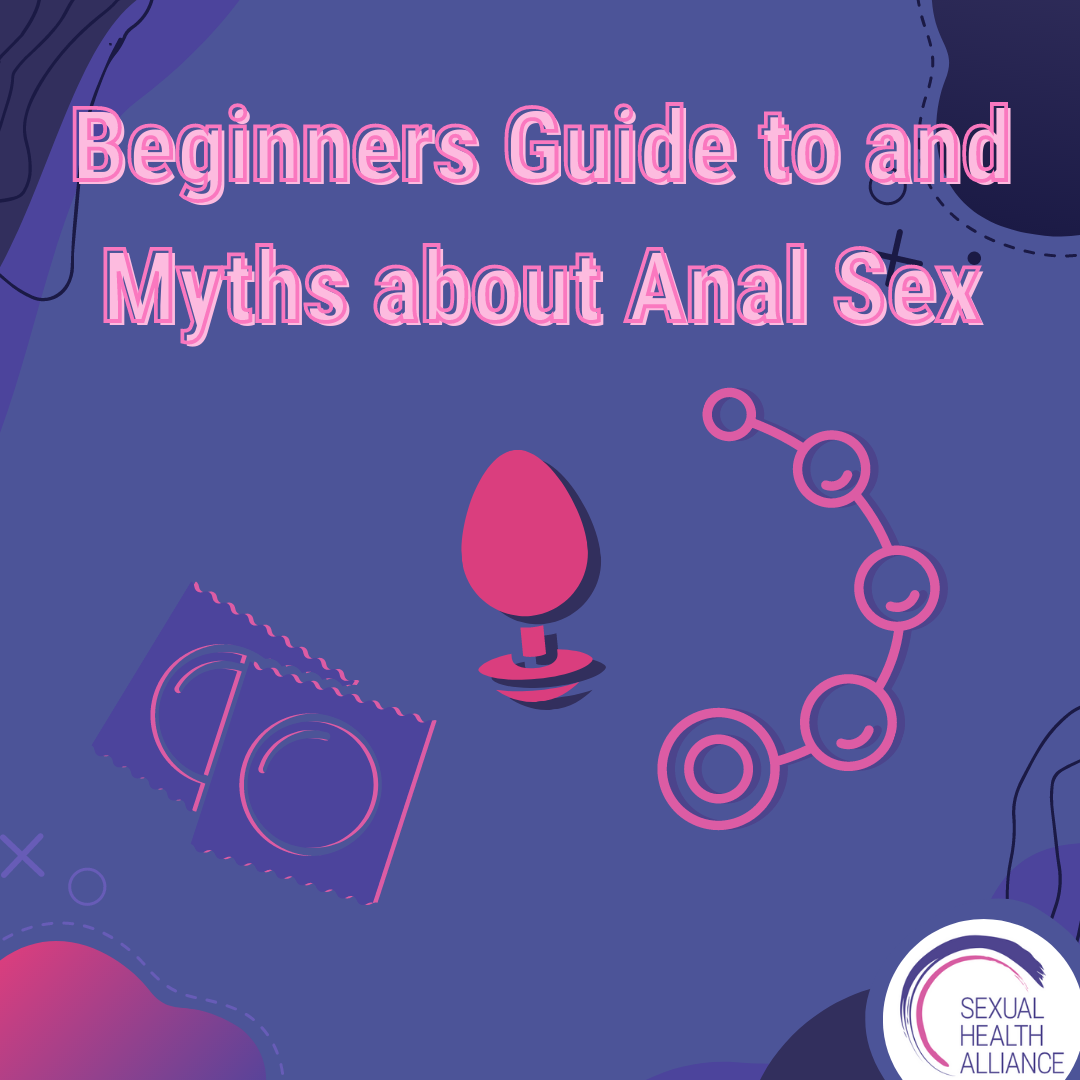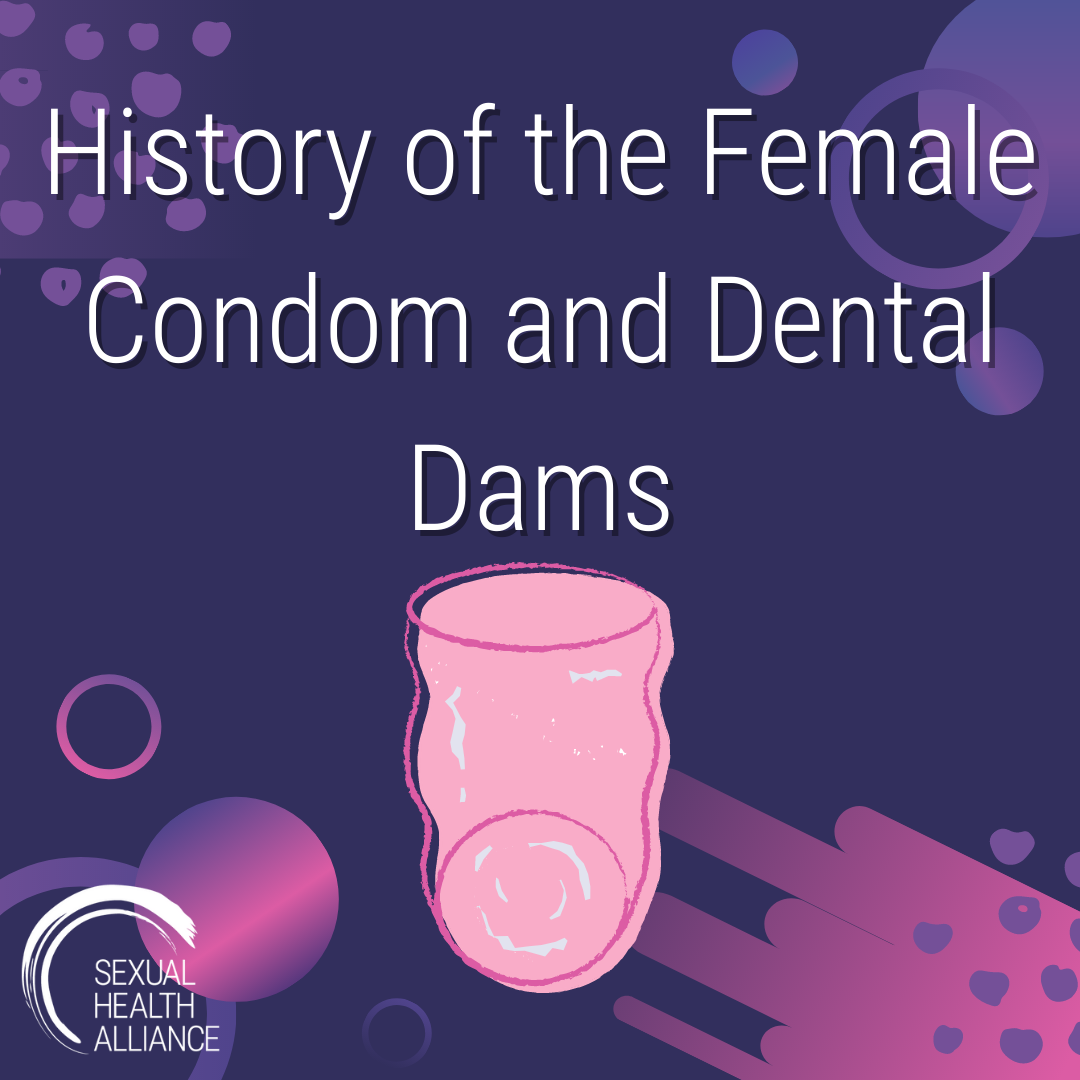I knew my main worry was that someone would hear us, and after discussing that with my partner we came up with the conclusion to play some music out loud. But not any music… sexy music. Something about listening to these slow and sensual songs kept me focused on the moment, and if my mind would wander it would tune into the song and still make me think of sex—not anything else that could be worrying me. We made sure to use the same playlist each time. When I would see the playlist thumbnail or hear the first few beats of the first song, I would get into the zone: to an extent, I think I may have classically conditioned myself doing this, but I don’t think Pavlov minds too much. It is also important to note that the moment sex finishes and aftercare commences, we use an entirely different playlist — something soft and not related to sex in any way.
Helpful and Sex-Positive New Years Resolutions
Each year, January seems to bring an influx of change. In some ways, this can be beneficial, helping us recenter and refocus our energies and goals as we move into a new year. But oftentimes this narrative of change is focused on what not to do, and actually shames us for our habits and processes. It can be difficult to see restrictive goal setting, diet culture, and negative self-image on the rise on social media and in our social circles. The best way to combat this negativity is to take the time at the beginning of the year to come up with resolutions that center your happiness. These sex-positive, body-positive, and mind-positive goals will set you on the right track for your year and will be much easier to stick to long-term.
When setting goals for your sex life, consider reflecting on your past experiences to better understand what aspects have benefitted you and brought you happiness and which experiences have detracted from your mental wellness. This could mean a shift in the partner or partners you choose, your sexual healthcare practices, or the way you frame sex in your mind. If you have had a new partner lately, it could be a great time to get tested and start the year off with a clean slate. If there are items on your sex bucket list that you would love to try, set the intention, to be honest, and brave this year!
Erotic Asphyxiation: Safety, Risk and Guidance
Erotic asphyxiation (EA) is the official term for breath play, it involves intentionally cutting off the air supply for either yourself or your partner via choking, suffocating and other acts. It does however, pose a lot of risk that does not tend to be addressed in mainstream media, nor portrayed in a safe manner through pornography. Erotic asphyxiation can be extremely dagerous if the correct precautions are not taken. Janet Brito, a specialist in sex therapy, quotes that “EA is truly very risky and may lead to serious injury, including cardiac attest, brain damange from lack of oxygen, and death”. There is no way to practice breath play that is 100% safe as all types of breath play pose different risks e.g. using your hands versus using a belt.
People enjoy participating in breath play for a plethora of reasons. Physiological reasons are one of the most common ones, as mentioned previously during breath play you or your partner may have oxygen restricted from the brain. When oxygen levels are low, you may begin to feel lightheaded or dizzy. But when the pressure is released there is a rush of oxygen and blood, this is also accompanied by a rush of release of dopamine, serotonin, and endorphins which can cause ‘head-spinning exhilaration’. For others there may be psychological reasonings for wanting to participate in erotic asphyxiation. Breath play can be heavily involved in power play, with the idea of the controller choking and the controlled being choked. Similar to physiological reasonings, some may want to enjoy erotic asphyxiation for physical reasons. In the immediate aftermath of suffocating, your body may confuse the rush of endorphins and hormones as a positive and pleasurable thing. However, in reality, those hormones were caused by your body's protective reaction. In the crossfire of emotions and pleasure, these sensations may come across as a ‘pain is pleasure’ rather than warning signals from your brain and body.
3 Ways to Meet Your Partner’s Sexual Ideals and Why You Should
Sexual compatibility is not a guarantee in intimate relationships. We fall in love and commit to relationships for many different reasons, and being a good sexual match is often not a high priority. I see a great many people who enter into relationships and make strong, deep commitments to people they don’t find sexually attractive or a good erotic match. All too often, these characteristics change over time, as our bodies and lives change, as a person we once found erotically exciting changes, and we lose some of that physical interest. Sometimes, I see individuals and couples in treatment who initially entered into a relationship with the idea that a sexual match simply wasn’t all that important. They told themselves (and were told by society, family, culture, religion, and the media) that what was most important was a spiritual and emotional bond and life partnership. Sexual satisfaction and connectedness are often treated as secondary at best, if not irrelevant. “Why would you want a divorce just because you’re sexually unhappy? You’ve got everything else that you could possibly want in your marriage!” But different sexual interests, sexual desire discrepancy, and unmatched sexual needs are among the most common reasons that couples come to therapy. It turns out that despite what people tell themselves, sexual compatibility is important. And how we deal with sexual mismatches may be even more important than a sexual match.
For many people, sexual satisfaction is an important component of their lives, though sexual satisfaction is a complex and nuanced factor. For instance, when couples are sexually unsatisfied, it contributes disproportionately (around 60% or so) to feelings of general relationship dissatisfaction. Unfortunately, when a couple is sexually satisfied, it contributes only around 15-20% to their general relationship satisfaction. So being sexually unsatisfied weighs heavily on people's feelings about their relationship, but sexual satisfaction won't save an otherwise troubled relationship.
Often, sexual satisfaction is measured and assessed by simple sexual frequency: Are you having sex as much as you would like to? Unfortunately, sexual satisfaction involves more than that: If you’re having lots of sex, but it’s not the kind of sex you really want, or with a partner who you find sexually attractive, is that truly satisfying? For people who are in a relationship with someone who doesn’t meet their sexual ideals, or matches what we really want in a sexual partner, people try a variety of strategies to overcome this sexual mismatch. They may try to reframe their expectations and ideals to meet their partner (talk themselves into being happy with what they’ve got); they may perceive their partner as being closer to their ideal than the partner really is (try to see the glass as half-full), or they may actually try to change their partner to meet their ideals. These strategies may or may not succeed, but it's clear that trying to change your partner rarely works, and often actually increases both relational conflict and personal dissatisfaction.
Beginners Guide to and Myths about Anal Sex
When it comes to anal sex, the act itself has become a bit of a taboo in popular culture. A lot of folx believe that anal sex is reserved for gay men or cis-hetero relationships (typically with the cis-male acting as the top). This is a myth. The thing about anal though is that it’s a perfectly normal way to have sex regardless of one’s gender or sexual orientation. It’s also a very pleasurable sexual activity to engage in; “for those who have a prostate gland, anal sex can provide intense stimulation, while those with a vagina often experience internal clitoral stimulation.” (getmaude) The prostate gland is ultimately the g-spot of the ass- for some, it can feel amazing when stimulated. Anal sex also includes more than just penetration! The opening of the butthole is where most of the nerves are, and this is where analingus comes into play. Analingus is where a partner lightly touches or rims the opening of the butthole with their tongue- this can heighten your partner’s orgasm. In this sense, anal sex is not reserved for any specific sexual orientation, it can be universally enjoyed.
Another common myth about anal sex is that it’s normal for the process to be painful. This is not true! When done correctly anal sex should not hurt and has a lot of potential for pleasure. If anal is painful it could be “because there isn’t enough foreplay beforehand or you’re not lubricated enough, or you’re just diving into things too suddenly to the point of causing pain.” (cosmopolitan) Another way to prevent pain is to ensure that your body is fully relaxed before engaging in any sort of anal penetration. It’s noted that “relaxed anal sphincter muscles make penetration way easier and will help alleviate any concerns about pain.”(cosmopolitan) One way to relax the body can be to have some THC or CBD before sex but make sure you feel comfortable with the amount consumed. You can also use a CBD-based lube on the anus to really relax the muscles and possibly even increase sensation. Anal sex can also be painful if you’re butt is not stretched enough for penetration. It’s best to start slow, maybe with a finger or small butt plugs rather than starting right away with dildo or penis penetration. This is because the anus is not as elasticized as say a vagina is and needs to be stretched in order to accommodate anal sex. Overall, if you don’t want anal to be painful it’s best to use lots of lube, ensure your body is relaxed, and start slow and small.
Let's Stop Beating Around the Bush - The History of Pubic Hair
Fellow vulva owners know the pain and discomfort of removing pubic hair. Whether that is through waxing (which to be honest I am terrified of) or bending over in the world's most uncomfortable position in the shower to shave off those last few strands - only to get out of the shower and realize you left a patch. When I was first told that I should remove it I attempted to do so through epilating - for those who don’t know, this is essentially a tiny torture machine that spins around and plucks out individuals strands of hair. Needless to say, I never tried that method again. Now I am 20 I don’t care so much about my pubic hair, yet the moment I become intimate with my partner it all changes. Though he reassures me that he doesn’t care and finds it ‘sexy’ - I still feel like I am doing something wrong by letting him see it. It is incredibly hard to break free from the early 2000’s teachings that hair-free is sexy, to teach myself that there is genuinely nothing wrong with pubic hair - whatever shape, length, or style I choose. So where did the idea that we actually have to do something about pubic hair come from?
Why the Walk of Shame is More than a Phrase…
The walk of shame is deemed to be part of the college experience —you are either participating in this walk or watching it. It is apparent that this walk of shame is only applied to women even though men can still exhibit this behavior. It goes against the way sex should be kept hidden and taboo, it rebels against these norms and acknowledges the fact that women have sexual experiences just the same that men can.
Brett Luceford, author of Naked Politics: Nudity, Political Action, and the Rhetoric of the Body, takes a look at the walk of shame and makes a great insight into how it “functions to discipline female sexual practice by reinforcing gender stereotypes and punishing women who transgress socially constructed norm.” Prior to reading this paper, I never had a second thought about how truly misogynistic the walk of shame is — my male housemates would laugh and leer at the girls coming back in last night’s clothes; yet boast about their sexual conquests from the same night. These double standards were literally right in front of my eyes, in the same room as me, but I simply never realised.
The walk of shame has further been commodified and commercialized, becoming part of popular culture. Luceford questions Urban Aid creating a “Shame on You Kit” which includes: toothbrush, toothpaste, a thong, three condoms, pain relief, and a “‘leave-behind note.”’ Yet the fact these kits are clearly aimed at only women is incredibly telling of our current views on sex and hookup culture. Urban Aid does not provide a male version of the Shame on You Kit, which is consistent with their motto “just what a girl might need” and hence “making the walk of shame a female problem that only reinforces masculine values.” Whilst I could not find the original page promoting the product, others that mention it repeats the phrase “if you have to do the walk of shame… at least you’ll be clean.” This idea of sex and needing to be clean only promotes sexist ideas that a woman having sex is a dirty act, especially if it is under the circumstances of a hookup rather than within a relationship. Even if we were to ignore this idea, the kit provided doesn’t actually provide products to help someone feel clean and refreshed after sex — give me some wipes, not a thong.
History of the Female Condom and Dental Dams
Invented by Sanford Barnum in 1864 for dental practice, the dental dam was used to separate out one tooth in the mouth and protect against contamination. It wasn’t until the late 1980s during the rise of the HIV epidemic that the public began using this product for oral sex. To this day, the effectiveness of dental dams is highly contested; the official narrative states that they provide protection against sexually transmitted infections, but no formal clinical trials have been done to test this assertion. Despite this, they are undoubtedly better means of protection than using nothing at all. Interestingly, although partners of all kinds engage in cunnilingus, dental dams have historically been marketed to queer women alone, who are also the largest demographic to use them. Dental dams can also be used for anilingus, meaning they can truly be used for any body or orientation.
The History of the Vasectomy and its Modern Convenience
A vasectomy is a procedure that stops a man from having children. When my father got his vasectomy, I was a child and didn’t know what the procedure was or what it consisted of; all I knew was that I wouldn’t have any more siblings. I remember being pretty upset, as I had always wanted a younger sibling. I was even more upset when my father came home from the hospital in pain, as I didn't understand what was going on. There were lots of frozen peas! He seemed to be relieved that he didn’t have to house and feed any more children. Even though my mother had a set of premature twins, I remember her too being upset because she couldn’t have any more children. I couldn’t tell which emotion held more sway: Sadness or relief. I could, however, tell that my father felt secure with the procedure and that he trusted his doctor. In my eyes, the vasectomy was like birth control for men.
Interestingly enough, the vasectomy was not always looked to as a means of contraception. The thought of “contraception was furthest from the minds of the early human pioneers who thought that the procedure may reduce masturbation, treat criminality, and improve quality of life.” In the modern day, we know that a vasectomy is solely used as a means of contraception and that the procedure is much more seamless than it was back in the day. Now that I’m older and understand what a vasectomy is, I’m interested in the history of the procedure and its convenience in the modern-day. How did the Vasectomy come to be such a popularized mainstream procedure?
A Pronoun Crash Course in Time for the Holidays
Why Are Pronouns Important?
Gender identity can be a tumultuous and emotional journey, and for those brave enough to embrace their true selves, pronouns can be either affirming or detrimental to their mental health. For many, having others refer to them by their correct pronouns feels incredibly validating. On the other hand, being misgendered with incorrect pronouns can increase gender dysmorphia, which can have serious mental health implications. Further, having these conversations and making space for gender identity places these issues in focus for older family members who may not be accustomed to them.
The Pronoun Conversation: Etiquette
The best way to start the pronoun conversation is to share your own. By doing this, you open the space for everyone to share, which takes the pressure off of anyone in particular to initiate the conversation. Additionally, if everyone shares their pronouns initially, it decreases the likelihood of misgendering a friend, an experience that can be very hurtful. Another tip is to avoid the phrase “preferred pronouns” which implies that gender identity is a deliberate choice not an inherent part of one’s identity. Instead, just refer to them as “pronouns”, simple as that!
Pronoun options (this list in not inclusive, people can use any pronouns or combinations of pronouns they desire):
What Does Non-Binary Mean?
To be non-binary is to exist outside of the construct of the western gender binary. The gender binary is “the Western concept that there are only two gender options: male or female.” (minus18.org.au) The gender binary is harmful in the sense that it perpetuates gendered ideologies related to societal definitions of what it means to be a cis-man or cis-woman. The binary is ultimately redundant, as a person of any gender can experience masculinity and feminity. Gender is fluid, and it’s near impossible to exist entirely on one side of the binary. The simplest way to define non-binary is “someone who does not identify as exclusively a man or a woman.” (minus18.org.au) Although nonbinary is often regarded as a new idea, “the identifier has been around for as long as civilization has.” (healthline) Nonbinary gender has been recorded as far back as 400 B.C. to 200 A.D. when Hijras — people in India who identified as beyond male or female — were referenced in ancient Hindu texts. India is progressive in the sense that its culture and language reflect Hijras, actively acknowledging individuals whose gender exists outside of the male-female binary.
How to Help A Client Who Is Exploring Their Sexuality
Exploring one’s sexuality is a normal and healthy part of life. Remember that sexuality is “basically a way to describe the feelings you have for someone you fancy or are attracted to.” (lanarkshiresexualhealth) One study that examined sexual orientations of people from teenage years through early adulthood showed that changes occurred throughout the duration, “noting that ‘Substantial changes were common not only from late adolescence to the early 20s but also from the early 20s to the late 20s, indicating that sexual orientation development continues throughout emerging adulthood.’” (verywellmind) However, it can be scary and often lonely to explore one’s sexuality alone. Sex therapy offers guidance while exploring one’s sexuality. A sex therapist can assist in such exploration using techniques such as cognitive behavioral therapy, regular talk therapy, or narrative therapy. It’s noted that a person’s relationship with their own experience “of sexual desire is often inextricably linked to [their] sense of identity, self-esteem, personal agency, energy levels, self-care habits, and interpersonal relationships.”(ct.counseling) If you’re a sex therapist with clients who are questioning their sexuality, there are some simple exercises that you can conduct in therapy to help your client.
Better Metaphors for Sex and Sexuality
In our society, it is considered inappropriate to talk about sex. Because of this, plenty of analogies are installed to veil the conversation while still having it, but few are accurate or positive. The most common metaphor we use is to describe it like baseball: someone “scores,” there are “bases” to hit, and the ever-present fear of “striking out.” This language is not only competitive and unhealthy, it’s inaccurate to what sex is really about.
SEX ACTS AS A PIZZA
Sex educator Al Vernacchio saw this need for a better way to talk about sex. In his famous Ted Talk, he confronts the issues with the baseball metaphor and presents the solution: Sex as pizza.
During baseball season and (usually) on a pretty tight schedule. When do we have pizza? When we’re hungry We can decide that we’re hungry but recognize that it’s not a good time to eat. Or maybe it’s the best time to eat and you can really indulge. When playing baseball, there is an instant understanding of competition and opposition. When eating pizza, however, there is a sense of community and shared experience. When playing baseball, there is very little communication. Baseball has structured rules and an end goal. Pizza, however, entails communication and even negotiation. Baseball has specific equipment, making it not accessible for everyone. Baseball is less universally understood than pizza is as well. Pizza has millions of flavor and topping combinations, finding a way to meet everyone’s needs. The only goal in baseball is to win. The goal of pizza is satisfaction.
“Clean” and Other Marketing Ploys in the Sexual Wellness World
For the most part, we understand marketing labels when it comes to food. “Organic,” for example, we know means higher care when into production and therefore it is marked at a higher price. Because food is regulated so heavily, it’s harder for companies to tout something like “organic” or “fair-trade, the same cannot be said for personal care products. Cosmetics, body care, and the like have minimal standards to meet when claiming these terms.
While condoms and personal lubrication are categorized as “medical devices” by the Food and Drug Associate (FDA), there is still much gray area in the personal product industry. Moisturizers, for example, are not regulated and so if lubrication leans more moisturizer, it doesn’t have to meet the same standards as a jug of synthetic, hospital-grade lube. To further contradict, when a moisturizer features certain ingredients that affect the body (like CBD oil), they are now categorized as a “drug,” putting them through entirely different standards.
For this reason, there’s reasonable suspicion when a product features a busy, over-loaded label with every current Sephora buzzword. Here a few you might encounter and could use another look over:
The Difference Between Sex and Gender
Sex and gender are two concepts that are commonly confused in our society. This can be frustrating for many of us because confusing sex with gender or vice versa can invalidate someone’s identity. Sex and gender are not the same, and everyone must learn the difference between the two. To put it simply:
“Sex is a label — male or female — that you’re assigned by a doctor at birth based on the genitals you’re born with and the chromosomes you have. It goes on your birth certificate.” (plannedparenthood)
Some individuals prefer to use the phrase “biological sex” when describing their sexual identity. Others use the phrase “ assigned male at birth” or “assigned female at birth.” This assignment of sex takes note of the fact that infants are assigned their sex when they come out of the womb, usually by a doctor. This assignment of sex does not always reflect what’s going on inside someone’s body “... how they feel, or how they identify.” (plannedparenthood) For this reason, it’s essential to be knowledgeable about the process of sex assignment in the first place. Fertilization is a biological process that each and every human undergoes that directly relates to one’s assigned sex at birth:
“Each sperm has either an X or a Y chromosome in it. All eggs have an X chromosome. ● When sperm fertilizes an egg, its X or Y chromosome combines with the X chromosome of the egg. ● A person with XX chromosomes usually has female sex and reproductive organs, and is therefore usually assigned biologically female.
“A person with XY chromosomes usually has male sex and reproductive organs, and is therefore usually assigned biologically male.” (plannedparenthood)
Damaging Misconceptions About Sex Workers
While sex work is finally becoming more normalized in our society, there are still a lot of harmful misconceptions surrounding the job. To destigmatize sex work and validate it as a true profession, it’s essential to explore some of these myths. The Equality Institute provides a great resource on their website called “Unpacking Harmful Myths Around Sex Work,” which is super helpful for this article. It’s noted that:
“Sex work is an industry in which its workers face extreme stigma, violence, and discrimination.” ( equality institute )
In debunking some of these misconceptions, we can hopefully understand how myths come to support this extreme stigma, violence, and discrimination that we see in the industry. Sex work is legitimate work, and sex workers deserve the same respect as individuals in any other profession. Getting educated is the first step in making the sex industry a safer and inclusive space for workers.
Masturbation 101: How often should you do it?
Masturbation is a wonderful thing. There’s no right or wrong way to masturbate- as long as you’re practicing safe sex with yourself. The act itself has a lot of noted health benefits when it comes to stress relief and the promotion of a healthier sex life. Masturbation “releases dopamine and oxytocin, chemicals that give us a natural high, help us sleep and can even act as a natural painkiller.” (her.ie) When it comes to the frequency of masturbation, though, the answer varies from individual to individual. There isn’t a masturbation formula that will figure out how often you should be masturbating! Instead, it depends on your own individual needs, desires, and sex drive. Sex therapist Tessa Bergin notes the following in an article for her:
“There’s no optimal number of times people need to masturbate, this will vary significantly from person to person...some might feel the desire to masturbate daily, others every now and then.” (her.ie)
20 Questions with Carlin Ross
Gender Terms “Pocket” Guide
Language is constantly changing, constantly evolving, and the language for sex and sexuality is no exception. Language, like gender, is fluid and can accommodate everyone who wishes for better identifiers. As this list proves, there are many labels beyond the binary we’re all familiar with. This list focuses specifically on different gender identifiers, sexual orientations, and personal labels instead of an entire dictionary for all things sex-related. So, my advice, bookmark this page, share it with your aunts and grandparents and those new to the vast world of gender terms, and, ultimately, have it handy whenever someone whats to question your language.
These terms and their accompanying definitions came from Chloe O. Davis’ The Queens English: A LGBTQIA+ Dictionary of Lingo and Colloquial Phrases and YouTuber Ashely Mardell’s The ABCs of LBTQ+. As these two sources stress, not all of these terms are used by all LGBTQIA+ people, and, most importantly, some of these terms are not appropriate for people not in the LGBTQIA+ community to use. There are invaluable resources, like The Queens English, that go far more in-depth than I was capable of doing here. Please check them out too.
Evolution of Desire Pt 2: Mate Shopping in 11 Seconds
After covering the basics of the evolution of desire, the cross-research on mate selection, pair-bonding, and particularly the term Mate Shopping, left me asking for more. Surely mate selection has changed greatly, just as desire has, but what does it look like today, in the 21st-century where virtually all “mate shopping” happens online? Are there any similarities still to the dating ways of our ancestors? Searching for a mate is definitely more complicated now, and though some things are still the same, our desire and how we bond is based on the context—the stuff each person brings—instead of just good or bad genes.
Similar to desire, mate selection comes with a preconceived binary. On the one hand, there is the ingrained pop culture narrative of women during their estrus period, are desperate for sex that they’ve turned into a Girl Gone Wild. Her standards are infinitely lower than during the other days of her infradian rhythm and the need for sperm drives her wild—again, the hypersexualized woman. On the other hand, however, is the woman with impossibly high standards—the tease, prude, or bitch. For not wanting a mate enough, she is mocked. Both women are criticized, both are considered broken which is completely false.























